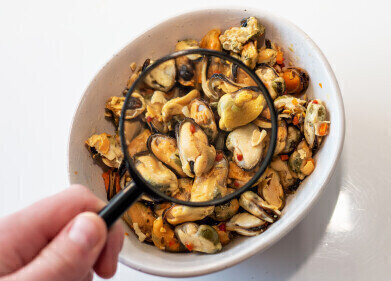GC-MS
Chromatography Checks the Wrapping — Saving Food Aromas
Oct 12 2016
Times have changed in the culinary world — new and exciting foods and flavours are available in any local supermarket. Gone are the days of nothing but meat, potatoes and veg covered in gravy. Now we can taste foodstuffs and spices from around the world — even on a wet Tuesday night in the North of England exotic dishes are being served as we take off our flat caps.
But how can we be sure that we are getting the full flavour of Jamaica, Thailand or Morocco? How does the packaging affect the spices and food we buy? Research carried out by Dr Pattarin Leelaphiwat in Thailand — alongside colleagues around the world — looked at how three packaging materials would seal in the aroma and taste molecules of Thai ‘tom yam’ seasoning powder. Savour a bowl of Thai Hot and Sour Soup as we look at the effects of different packaging on spice flavours.
Thai ‘tom yam’ — lemongrass, galangal and lime
Aromatic compounds have an important role to play in cooking — the majority of flavours we taste are due to aroma molecules escaping from the food and travelling from our mouths to smell receptors in our nose. So knowing how well the packaging used can preserve the aromas is important for consumers and retailers. As Leelaphiwat states in the paper — published in the Journal of the Science of Food and Agriculture —
‘Aroma loss occurs due to the interactions between aroma compounds and polymeric packaging materials. Thus the aroma barrier is an important characteristic of packaging materials in protecting against aroma loss.’
The researchers sealed packages containing 30 g of seasoning powder with one of three packaging membranes — Nylon 6, polyethylene terephthalate (PET) or polylactic acid (PLA). The packages were stored at 38 ?C (accelerated storage condition) for 49 days. The samples were then evaluated using chemical and taste tests to see the effectiveness of the various membranes.
Nose and chromatography — keeping food fresh
Samples were shipped to a sensory research facility at Michigan State university for a team of expert panellists to assess the aromas of the tom yam samples. They scored the intensities of the three main definitive aromas of tom yam — how lemongrassy the lemongrass was, the acidity of galangal and the leafiness of kaffir lime leaf.
At the same time, gas chromatography with mass spectrometry (GC-MS) was used to analyse the air in the sample vials to identify and quantify the various aroma molecules. The use of GC-MS in aroma analysis is discussed in the article, The Benefits of GC/MS Coupled with a Headspace Trap to Monitor Volatile Organic Compounds in the Production of Beer.
Both the sensory team and the GC-MS analysis showed that unsurprisingly the aroma intensity decreased over time. The different membranes didn’t appear to make any difference to the aroma intensity scores or the concentration of aroma molecules.
So how do I keep my lemongrass lemongrassy?
Digital Edition
Chromatography Today - Buyers' Guide 2022
October 2023
In This Edition Modern & Practical Applications - Accelerating ADC Development with Mass Spectrometry - Implementing High-Resolution Ion Mobility into Peptide Mapping Workflows Chromatogr...
View all digital editions
Events
Apr 23 2024 Kintex, South Korea
Apr 23 2024 Seoul, South Korea
Apr 28 2024 Montreal, Quebec, Canada
May 05 2024 Seville, Spain
May 15 2024 Birmingham, UK














